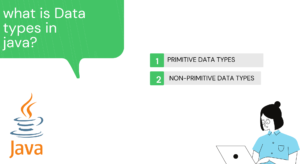Introduction
Java Thread Priorities are a crucial aspect of concurrent programming in the Java language. They determine the order in which threads execute within a program. In this blog post, we will explore the concept of thread priorities, how they work, and why they are essential for Java developers.
Table of Java Thread Priorities
What Are Java Threads?
Before we dive into thread priorities, let’s briefly explain what Java threads are. In Java, a thread is the smallest unit of execution, allowing multiple tasks to run concurrently within a single program. Threads share the same memory space but operate independently, making Java suitable for developing multi-threaded applications.
The Role of Java Thread Priorities
Thread priorities in Java are represented by integer values ranging from 1 to 10, with 1 being the lowest priority and 10 the highest. The priority of a thread influences how the Java Virtual Machine (JVM) schedules and allocates CPU time to it. Threads with higher priorities are more likely to be executed before those with lower priorities.
Setting Thread Priorities
In Java, you can set the priority of a thread using the setPriority() method, which is available for all thread objects. For example:
Thread highPriorityThread = new Thread();
highPriorityThread.setPriority(Thread.MAX_PRIORITY);
The Default Java Thread Priority
By default, all threads are created with a priority of 5, which is considered a normal priority. You can adjust this default behavior to suit your application’s requirements.
When to Use Java Thread Priorities
Thread priorities are a useful tool when you want to control the execution order of threads in your application. Here are some scenarios where you might use thread priorities:
- Real-time Systems: In real-time systems, it’s crucial to ensure that certain threads, such as those responsible for user interface updates or critical calculations, get the CPU time they need promptly. Assigning higher priorities to these threads can help achieve this.
- Resource Sharing: When multiple threads share resources like files or databases, setting thread priorities can help control access to these resources. Higher-priority threads can be given priority when requesting shared resources.
- Load Balancing: Thread priorities can be used to balance the workload in a multi-threaded application. You can assign higher priorities to threads handling heavier tasks, ensuring that they are executed more frequently.
Thread Priorities in Practice
Let’s illustrate how thread priorities work with a simple example. Suppose you have two threads, ThreadA and ThreadB, with different priorities. ThreadA has a higher priority than ThreadB. If the CPU is available, ThreadA is more likely to be executed before ThreadB, and it will receive a larger share of CPU time.
Code Example
Thread threadA = new Thread(() -> {
// ThreadA's code here
});
Thread threadB = new Thread(() -> {
// ThreadB's code here
});
threadA.setPriority(8); // Higher priority
threadB.setPriority(4); // Lower priority
threadA.start();
threadB.start();
In this example, ThreadA, with a priority of 8, will be favored over ThreadB (priority 4) when there is competition for CPU time.
Thread Priorities vs. Thread Synchronization
It’s essential to note that thread priorities are just one tool in your toolkit for managing thread behavior. They don’t guarantee precise execution order, and relying solely on priorities can lead to non-deterministic behavior. To achieve precise control over thread execution, you should also use thread synchronization mechanisms such as locks and semaphores.
Best Practices for Using Java Thread Priorities
While thread priorities can be a valuable tool, they should be used judiciously. Here are some best practices for using thread priorities effectively:
- Avoid Excessive Reliance: Overusing thread priorities can lead to unpredictable behavior in your application. Reserve them for situations where precise control is required.
- Test Thoroughly: Thread priorities can behave differently on various Java platforms and operating systems. Extensive testing on your target environment is essential.
- Document Your Decisions: When you set thread priorities, document your reasoning and the potential consequences. This helps other developers understand your design choices.
Conclusion
In this blog post, we’ve explored the concept of Java Thread Priorities, how to set them, and when to use them. Thread priorities can be a valuable tool for controlling thread execution order, but they should be used wisely and in conjunction with other synchronization mechanisms.
By understanding and using thread priorities effectively, Java developers can create more efficient and responsive multi-threaded applications.
Differences Between Java Thread Priorities
In the table below, we highlight the key differences between high and low thread priorities:
| Aspect | High Priority Thread | Low Priority Thread |
|---|---|---|
| Execution Order | Likely to execute first | Likely to execute later |
| CPU Allocation | Receives more CPU time | Receives less CPU time |
| Real-time Systems | Suitable for real-time tasks | Less suitable for real-time tasks |
| Resource Sharing | Given priority for resource access | May wait for resource access |
| Load Balancing | Handles heavier tasks | Handles lighter tasks |



